On The Run with John Stifler: Fast walkers
| Published: 04-04-2025 1:47 PM |
I rarely listen to podcasts, but “The Omnibus Project,” by musician John Roderick and “Jeopardy” host Ken Jennings caught my ear months ago. Besides the fact that a typical installment lasts about as long as one of my workouts on an exercise bicycle and weight machines, Roderick and Jennings are pretty funny, and they dig into some wonderfully obscure subjects. They found themselves in particularly obscure territory recently, when they chatted about pedestrianism, which, as you’ve correctly supposed, is a fancy word for walking.
“Pedestrianism,” however, specifically connotes walking as a sport. Whereas most of the world’s population still regards walking as a means of getting from A to B when you don’t have a horse or a BMW, by the 18th century walking was a popular leisure activity in the industrializing part of the world. (Read Wordsworth.)
Leave it to the English not to just settle for strolls in the Lake District. In 1773, a law clerk named Foster Powell walked 400 miles from London to York. Later he walked 100 miles in 21 hours, 35 minutes, which would have made Powell pretty competitive in today’s ultramarathons. For good measure, he also ran two miles in 10 minutes. I can’t do that.
It gets better. In 1852, Thomas Hicks of Leeds (U.K., not Mass.) walked 1,500 miles in 1,000 hours. Society briefly struggled under the misapprehension that only a man could do such a thing or would be weird enough to want to, but in 1878 a woman named Ada Anderson matched Hicks’ feat. Even weirder, she subsequently came to New York to display her endurance by walking 2,700 quarter-miles in 2,700 hours, on a 189-foot indoor track in Brooklyn.
Seriously. Anderson walked a quarter of a mile every hour for 28 days and apparently looked as though she was having fun, despite enduring sleep deprivation on a scale unknown even to mothers of newborn triplets. She paused a couple of times to sing to the spectators, some 4,000 of whom paid anywhere from 50 cents to $2 to watch.
In the late 19th century, race-walking became less of a spectacle, more a regulated sport, with specific rules about technique. A competitor’s knee must be locked when one’s body weight moves over the foot that’s on the ground, and the rear foot may not leave the ground before the lead foot lands.
Bob Kitchen, an alternate on the U.S. Olympic walking team in 1976 who lived in Florence years ago, taught me a bit of this technique. I recommend it as a surprisingly good alternative to running – especially if, like me, you have suffered from achilles tendinitis. Running flexes the ankle sharply; race-walking puts much less strain on it. Once upon a time, I walked a mile in under eight minutes; I’ve seen a couple of people clock in the mid-fives.
****
Article continues after...
Yesterday's Most Read Articles
 Two dogs, three cats killed in Orange fire
Two dogs, three cats killed in Orange fire
 Five UMass Amherst students have visas, student status revoked
Five UMass Amherst students have visas, student status revoked
 Plans to move Northfield EMS to Bernardston property fall through
Plans to move Northfield EMS to Bernardston property fall through
 Shelburne Selectboard determines police detective will retain job
Shelburne Selectboard determines police detective will retain job
 Greenfield Police Logs: March 8 to March 16, 2025
Greenfield Police Logs: March 8 to March 16, 2025
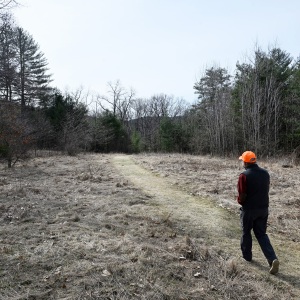 Lochhead family, aided by Franklin Land Trust, conserves 65 acres in Conway
Lochhead family, aided by Franklin Land Trust, conserves 65 acres in Conway
As a runner, Foster Powell probably could have won one of the Tuesday night cross-country races in Northampton. That series of races, the best warm-weather weekday social and athletic event in Hampshire County, opened its 2025 season this week and continues until September. The races start at 6:30 p.m. in the parking lot on Burt’s Pit Road next to the Community Gardens. Entry fee is $5.
Memories of many past seasons of these races came on strongly last month when Kathy Furlani passed away. Kathy was a stalwart on Tuesday nights, running on those cross-country trails, listening to polkas on her headphones and establishing herself as one of the most durable runners on the local scene. She started slowly and patiently in her mid-t30s, sometimes the last or next-to-last finisher, but she got stronger as she moved into higher age groups and ran longer distances, including trail ultras and, in her 60s, snowshoe racing. With many other longtime runners in the Valley, I miss her.
****
Congratulations to Mohawk Trail Regional coach Mark Rabasco of Greenfield and Tufts veterinary student Kaylee Gladu of Harrisville, R.I., winners of last Saturday’s annual Ron Hebert Road Race. Rabasco, 30, led from start to finish, clocking 47 minutes, 54.8 seconds. Gladu, 24, was close behind, finishing third overall, in 51:32.2. Forty-four-year-old Nick Gaubinger, whom Ron Hebert coached years ago at Williston, finished second in 48:01.4. Second woman and seventh overall was Amherst High School coach Elena Betke-Brunswick, 40, in 55:34.1.
Are you running the marathon in Boston on Patriots’ Day? Send me an email (address below) beforehand, and I’ll send you a number you can phone after the race to tell the Recorder about it.
John Stifler has taught writing and economics at UMass and has written extensively for running magazines and newspapers. He can be reached at jstifler@umass.edu

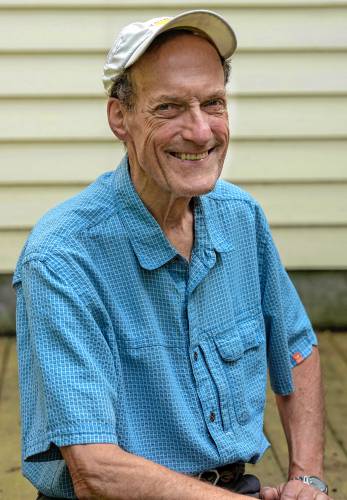
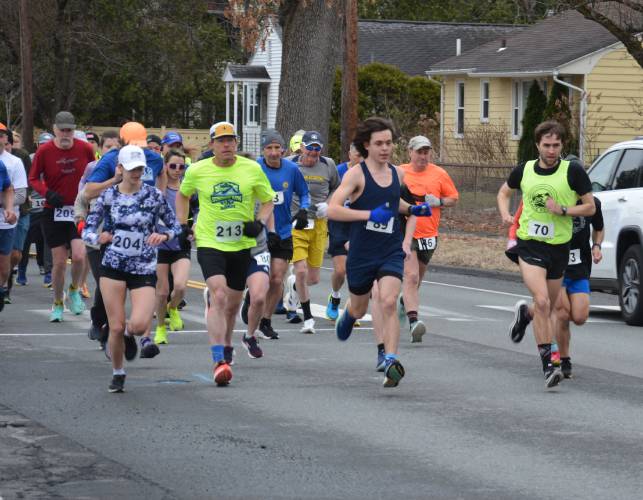





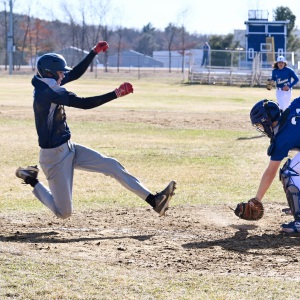 HS Roundup: Franklin Tech baseball wins third in a row following 8-1 triumph over Smith Academy
HS Roundup: Franklin Tech baseball wins third in a row following 8-1 triumph over Smith Academy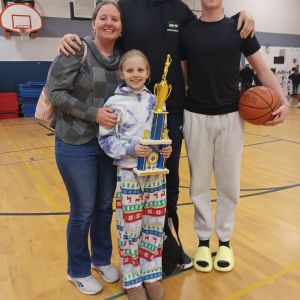 Bulletin Board: Greenfield's Savannah Thomas wins Knights of Columbus Hoop Shoot state title
Bulletin Board: Greenfield's Savannah Thomas wins Knights of Columbus Hoop Shoot state title High school track preview 2025: Powerhouse Frontier favorites to lead the local pack
High school track preview 2025: Powerhouse Frontier favorites to lead the local pack UConn women's basketball team captures 12th national title in dominant win over South Carolina
UConn women's basketball team captures 12th national title in dominant win over South Carolina
